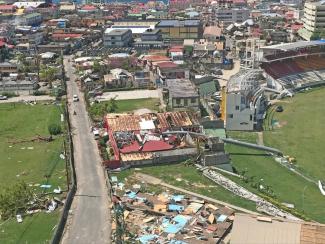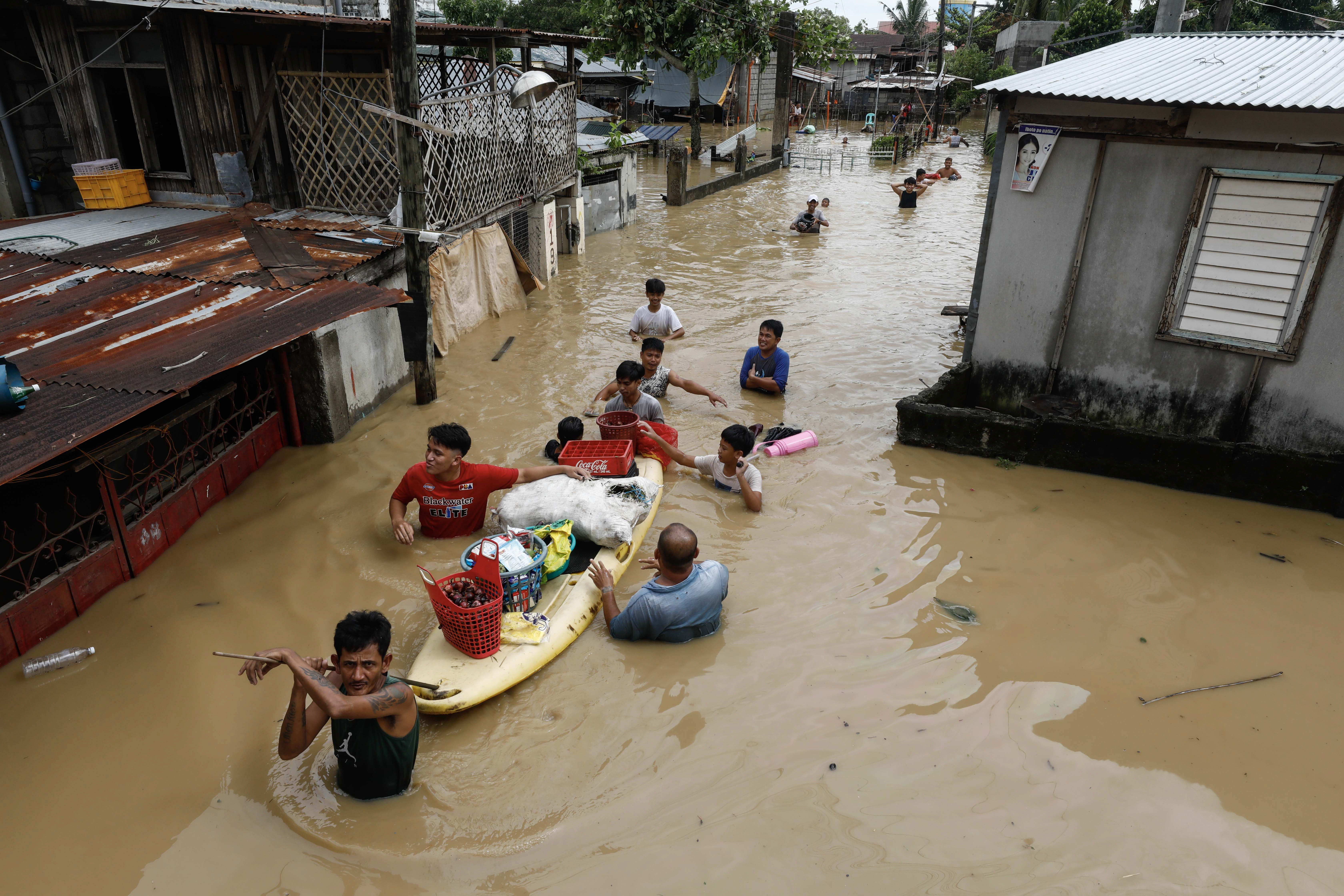Tropical storms
CARICOM plans to boost disaster resilience

Hurricanes are a natural hazard that forms over ocean areas close to the equator. They are powered by moist and warm air. The same kind of storm is known as “typhoon” in the Pacific and “cyclone” in the Indian Ocean.
In the Caribbean region, hurricanes occur in the months June to November. The “hurricane season” peaks between mid-August and mid-October. These extreme weather events can be very destructive. In 1979, for example, Hurricane David killed 2068 people. The Dominican Republic suffered more than half of those casualties, and 70 % of the electrical system was destroyed.
A more recent example was Hurricane Maria, which devastated Puerto Rico in 2017. According to research done by scholars from George Washington University, close to 3000 people died. The entire population of this US territory was left without electric power, which was fully restored only after 11 months.
Small-island nations are particularly exposed to climate risks (see Monika Hellstern on www.dandc.eu), but in most cases, the international public only takes note of the damage in the worst-hit places. Other islands suffer too, however. In 1979, Hurricane David made some 60,000 people – or about 75 % of the population – homeless in Dominica, a small island that was a British colony in the past. In 2017, Hurricane Maria caused damages amounting to $ 930 million there. According to the UN, four months later, 80 % of the houses still had inadequate roofing and 15 % of the children had not returned to school. The island counted 31 dead and 37 missing people.
Extreme weather is becoming more extreme
It is important to understand that natural disasters cannot be avoided. Societies must learn to live with them. However, global heating is compounding the problems with extreme weather becoming more extreme. This is an important reason why Caribbean societies are not better prepared for these calamities. The risks are familiar, but they have become greater than they were in the past.
Hurricanes, as stated above, gain their strength from warm and moist air. Hotter temperatures lead to stronger hurricanes that last longer, bring more rain, and cause more damages. Once a hurricane reaches land, it becomes weaker. The problem, however, is that they are now gaining more power as they build up over the sea water and accordingly take longer to dissipate after landfall. Research has shown that hurricanes used to lose 75 % of their intensity during the first day over land. Now, that ratio is merely 50 %. If the climate crisis continues to escalate, it will be further reduced.
Hotter temperatures lead to more devastating storms. The future of the Caribbean looks bleak unless climate change is mitigated. At the same time, the region obviously must adapt to the change that has already occurred or is no longer preventable. The archipelago must become more resilient. That requires new approaches and coherent action.
Regional institutions are rising to the challenge. The Caribbean Community (CARICOM) and the Caribbean Disaster Emergency Management Agency (CDEMA) have done important work in this regard.
First of all, they adapted the UN definition of “resilience” to regional needs. According to the UN Office for Disaster Risk Reduction (UNDRR), resilience means that a system, community or society which is exposed to hazards, is able “to resist, absorb, accommodate to and recover from the effects in a timely and efficient manner”. This includes the “preservation and restoration of essential basic structures and functions”. CARICOM and CDEMA added that resilience also means “bouncing forward quickly and in a manner that reduces susceptibility” to the same kind of hazard in the future.
Pillars of resilience
On this basis, they have listed five “pillars of resilience”. They are:
- social protection for vulnerable and marginalised people,
- safeguarding infrastructure,
- improved economic opportunities,
- environmental protection and
- operational readiness for recovery.
The supra-national policymakers have made detailed recommendations for each pillar. Moreover, they spelled out that policy and regulations should create an “enabling environment”. Good governance, in their eyes, also includes involving the public – and especially the young generation – in meaningful ways. They have called for capacity development, research, data management and funding for better disaster-risk control. Finally, CARICOM and CDEMA have stressed that good plans are worthless unless they are properly implemented.
It matters, of course, that 11 of 13 independent Caribbean nations are developing countries. They cannot be expected to build resilience by themselves. After all, they are struggling to cope with worsening disasters they did very little to bring about. Caribbean countries are not major emitters of greenhouse gases, but repairing disaster damages requires considerable resources which they could otherwise use for developmental purposes.
After a particularly devastating hurricane season, the CARICOM-UN High Level Pledging Conference took place in New York in November 2019. It resulted in donor commitments worth $ 1.3 billion, including over $1 billion in loans and debt relief. Major partners included the EU and its members, the USA, the World Bank and many others. UN Secretary-General António Guterres stated: “Countries in the Caribbean need support now to rebuild, and to take effective climate action.”
Two of the world’s most climate-affected territories
According to the Global Climate Risk Index 2021, which was compiled by the German civil-society organisation Germanwatch, two Caribbean territories were among the countries most affected by extreme weather events from 2000 to 2019. In that list, Puerto Rico ranked first and Haiti came in third.
While the exposure to hurricanes is basically the same, Puerto Rico’s and Haiti’s socio-political circumstances differ considerably. Puerto Rico is a US territory, though not a state, so its scope for self-government is limited (see Hans Dembowski’s 2017 blog post on www.dandc.eu). Its people are US citizens, but do not get to vote in national elections. A serious debt crisis has compounded the problems. Though the standard of living is comparatively high, half of Puerto Rico’s people live in conditions of poverty. Migration to the mainland USA is easy, however, and Puerto Rico’s population indeed dropped by almost 12 % to 3.3 million in the past decade.
Haiti, by contrast, is one of the countries the UN lists as “least developed” – and the only one in the Americas. It is struggling with a dreadful combination of high poverty, disintegrating statehood and multiple disasters, not all of which are related to climate change. Examples were the earthquake of 2010 and the subsequent cholera outbreak. The country’s population has increased by about 12 % to not quite 11.4 million in the past decade.
In view of Haiti’s multi-layered misery, the global media do not pay much attention to how much suffering hurricanes regularly cause. It is well known, for example, that Hurricane Sandy hit New York in 2012, but the global public is unaware of the same storm killing at least 108 people, leaving 21 missing and depriving 200,000 people of their homes in Haiti.
The Caribbean finds itself in an attractive, but tricky location. Thanks to its constant warm weather, many outsiders think of it as a kind of paradise. Widespread poverty and the poorly developed infrastructure, especially in remote villages, tell a different story. The relentless rise of temperatures is leading to increasingly extreme hurricanes. Caribbean people cannot rise to the challenges on their own. They deserve support for adapting to climate change – and their future also depends on major greenhouse-gas emitters radically reducing their carbon footprints.
Link
Germanwatch Global Climate Risk Index 2021:
https://www.germanwatch.org/sites/default/files/Global%20Climate%20Risk%20Index%202021_2.pdf
Marjorie Pons Piñeyro is a master’s student at Bauhaus University in Weimar. She specialises in natural hazards and infrastructure.
marjorieponspi@gmail.com









